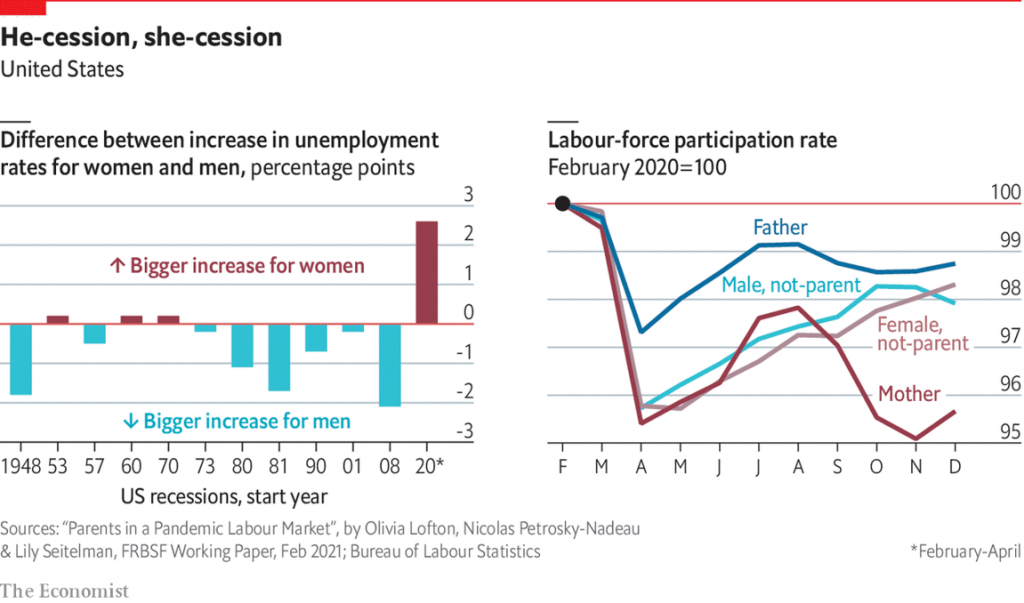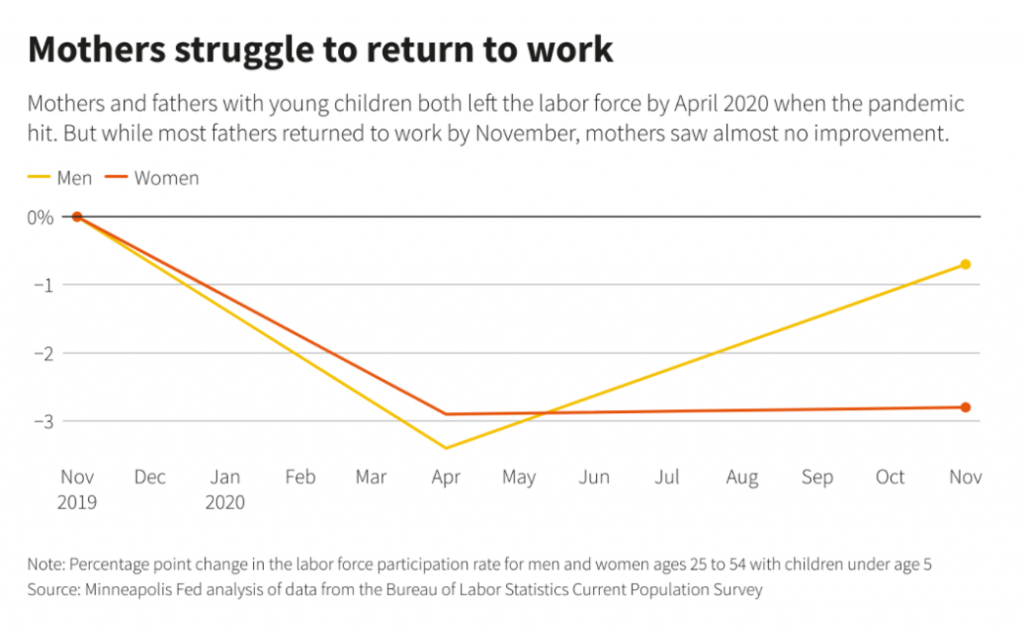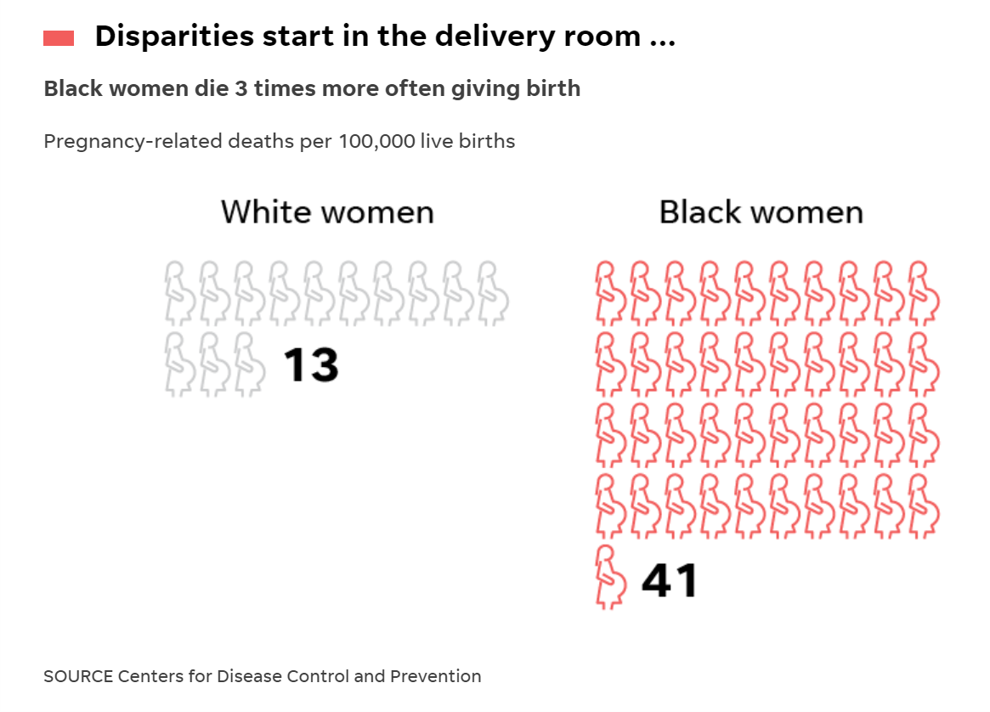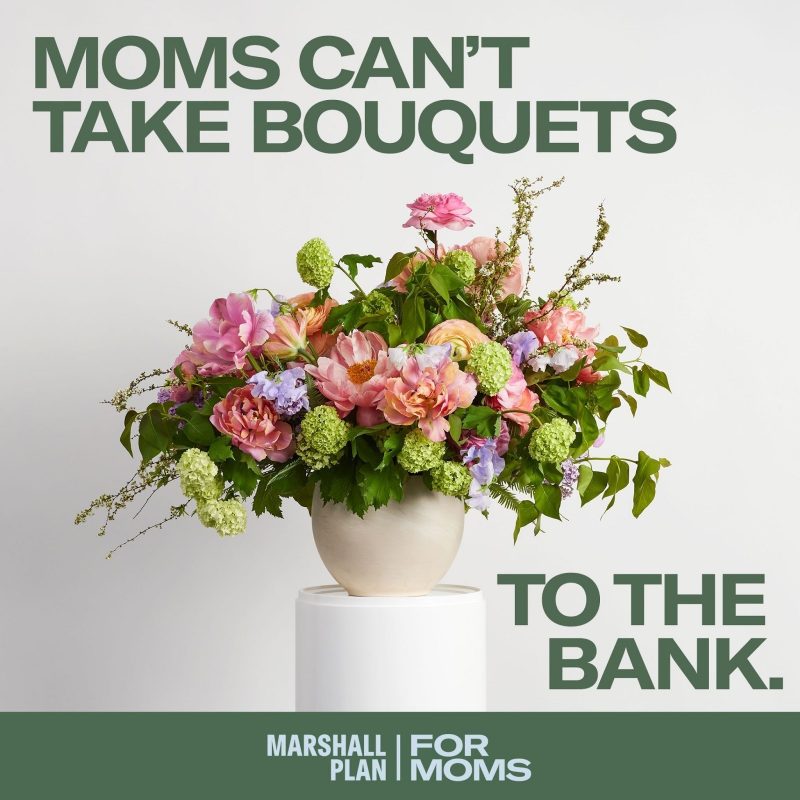To all the Moms I’ve loved and lost and those I still blessed to have in my life….
I’m thinking about our collective and individual health this 2021 Mother’s Day weekend.
There are three themes that whirl in the current Moms’ Health Mix:
- The impact of the COVID-19 pandemic on mothers’ health and life
- Mom-economics and the She-Cession — the financial roots of health inequity, and
- The larger context that is the persistence of women’s health disparities.
 First, the impact of the coronavirus and the economy have been intertwined, hitting women hard in terms of physical health, work, mental health (namely, anxiety, stress, and depression), and financial health.
First, the impact of the coronavirus and the economy have been intertwined, hitting women hard in terms of physical health, work, mental health (namely, anxiety, stress, and depression), and financial health.
The International Monetary Fund (IMF) has called COVID-19 “The Moms’ Emergency,” citing data from the U.S. monthly Current Population Survey finding that less educated women with young children were the most adversely affected during the first nine months of the coronavirus pandemic. This loss of employment among women with young children is largely due to the burden of additional childcare required in the shutdown and stay-at-home orders along with the type of jobs held by women earning lower incomes (e.g., hospitality, child care, retail, among others). The IMF estimated that this accounted for 45% of the increase in the employment gender gap — a gap that existed even before the coronavirus emerged.
 Thus we see one of the keys to getting more women back to work: childcare, covered here in Reuters this week.
Thus we see one of the keys to getting more women back to work: childcare, covered here in Reuters this week.
This phenomenon was explained in detail by this report from the Federal Reserve Bank of San Francisco titled, Parents in a Pandemic Labor Market,
Today, 7th May, the latest jobs report was issued by the Bureau of Labor Statistics, finding anemic growth number of 266,000 jobs was added to the U.S. economy in April 2021.
Second, the economic downturn in the pandemic economy has been largely a She-Cession, more negatively impacting women than men. [See my take on the She-Cession in an August 2020 Health Populi blog here]. In this week’s U.S. jobs report from the Bureau of Labor, we found once again few women have returned to work with fewer jobs created for women versus men.
Under the financial health-for-women umbrella also sits the issue of the Pink Tax — the higher prices women can pay for consumer goods, medical care, and other line items in the household budget. One of the rationales for covering preventive care in the Affordable Care Act was to ensure that women’s preventive services and access to health care would be equitably covered vis-a-vis men’s. In the autumn of 2021, we can expect the prices of female-facing consumer goods to be increasing soon in the U.S., several of the largest CPG companies have warned — for products in categories like feminine hygiene, baby care, adult incontinence, home care, and others that play leading roles on women’s shopping basket lists.
 Finally, to the third point: there’s an historical line that has found disparities and gaps in medical care services delivered to women compared with men in America. These also disproportionately impacted women negatively than men in the COVID-19 pandemic, Kaiser Family Foundation quantified in this analysis.
Finally, to the third point: there’s an historical line that has found disparities and gaps in medical care services delivered to women compared with men in America. These also disproportionately impacted women negatively than men in the COVID-19 pandemic, Kaiser Family Foundation quantified in this analysis.
Before COVID-19, just look at heart disease disparities, for example. The roots of the Go Red for Women campaign from the American Heart Association (AHA) comes directly out of the observed gap in cardiac care for women, which the campaign seeks to address through spreading evidence-based information and recommendations to raise awareness and improve heart-healthcare access for women. Heart disease is also the #1 killer of new moms, AHA has called out.
Speaking of new moms, women in America also suffer the highest maternal mortality in the world compared with other industrialized countries by far. The chart here shows CDC data from 2019 which clearly, so sadly illustrates the gap in maternal mortality between white moms and black moms.
 Heart disease and maternal mortality are just two of a long list and history of health disparities impacting women in the U.S. You can mine Kaiser Family Foundation’s library on these here, and the Centers for Disease Control’s portal on the issue here. Women of color have some of the deepest inequities in health and medical care, long-tracked by the Satcher Health Leadership Institute at the Morehouse College of Medicine.
Heart disease and maternal mortality are just two of a long list and history of health disparities impacting women in the U.S. You can mine Kaiser Family Foundation’s library on these here, and the Centers for Disease Control’s portal on the issue here. Women of color have some of the deepest inequities in health and medical care, long-tracked by the Satcher Health Leadership Institute at the Morehouse College of Medicine.
Bringing all of these issues together is the project The Marshall Plan for Moms, which launched a timely campaign this week just-in-time for Mother’s Day 2021. This updated-Marshall Plan tightly focuses on getting childcare and unpaid family leave back into the policy docket in the U.S. — the only wealthy country without a safety net for childcare and unpaid family leave. Talk of health disparities…
Reshma Saujani, the leader of the Marshall Plan for Moms organization and Girls Who Code, writes an op-ed in today’s New York Times suggesting the best gift for Mom’s on Mother’s Day 2021 is….money.
Here’s a link to the video of the campaign which feels so in-the-moment appropriate right now…
And do visit the Mom’s Deserve More Flower Store which quantifies the “bouquets” we could pick up for mom to celebrate her unpaid work (at $800 billion), lack of childcare ($13,000), lost jobs ($36,000), pay gap ($15,000), paid leave ($8,500), and mental stress (I believe under-estimated at $3,500).
Health Populi’s Hot Points: In seeking an image for these HotPoints focused on Mother’s Day 2021, I went to my go-to image site, The Noun Project, to get inspiration.
Appropriately, I discovered The Noun Project through my daughter, Anna, who is a designer and design-thinking professional. She is the person who made me a Mom, and I am so blessed that she did.
The snapshot here captures the first page of images The Noun Project curated based on my search of “Mother’s Day” today.
I now understand why I’ve had trouble identifying and deciding on one single image for this year’s Mother’s Day post. We wear so many hats, and the pandemic has only complicated our lives physically, financially, emotionally, socially. I love so many of the images here — the calendars (we’re busy and scheduled), the greeting cards and gift boxes (for the holiday), the caffetiere coffee maker with heart-shaped sugar cubes (for our beloved and highly-valued caffeine-fix), the flowers, the hearts…and the crowns we all wear as Queens of our homes, families, and selves.
Everyone, spread love to the many moms in your lives this weekend, even beyond the obvious suspects. They/We will love you back!
And you can share this wonderful video from my alma mater at University of Michigan featuring moms on staff with sound and loving advice for all Mothers…





 Interviewed live on BNN Bloomberg (Canada) on the market for GLP-1 drugs for weight loss and their impact on both the health care system and consumer goods and services -- notably, food, nutrition, retail health, gyms, and other sectors.
Interviewed live on BNN Bloomberg (Canada) on the market for GLP-1 drugs for weight loss and their impact on both the health care system and consumer goods and services -- notably, food, nutrition, retail health, gyms, and other sectors. Thank you, Feedspot, for
Thank you, Feedspot, for  As you may know, I have been splitting work- and living-time between the U.S. and the E.U., most recently living in and working from Brussels. In the month of September 2024, I'll be splitting time between London and other parts of the U.K., and Italy where I'll be working with clients on consumer health, self-care and home care focused on food-as-medicine, digital health, business and scenario planning for the future...
As you may know, I have been splitting work- and living-time between the U.S. and the E.U., most recently living in and working from Brussels. In the month of September 2024, I'll be splitting time between London and other parts of the U.K., and Italy where I'll be working with clients on consumer health, self-care and home care focused on food-as-medicine, digital health, business and scenario planning for the future...